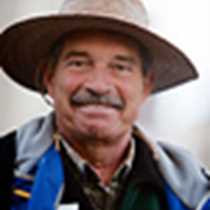Tabarka and Bulla Regia, Tunisia
Our final day in North Africa! From the small fishing village now turned into a still small tourist village for Tunisians, we traveled up into the mountains of Khroumina to 800 mts.The landscape is absolutely different from all our past experiences here in North Africa. Forests densely covered in multiple species of oaks and pines, madrones and tree heath! Deep ravines with a great under story, where wildlife abounds, and where hunting is undertaken to secure different animals such as boar and fox. The primary labour of this poorer part of the country is agriculture, and great plains are dedicated to wheat and barley production, as well as to the cork industry, of which Tunisia is a good producer. We had the opportunity of seeing a good number of these trees which had recently been debarked, and the red color was plainly visible.
Halfway up the mountain, we visited the small town of Ain Draham, built by those Moors expulsed from Spain after the reconquest. The hoses are unique for Tunisia, with their attractive tiled roofs. Later on, at the unusual ruins of Bulla Regia, built atop a mountain by the Romans, we were almost alone. Our focus here were the underground villas, quite fresh for the hot summers here. They sported an open-to-the-sky courtyard, but everything else was in the deep recesses of the carved-out limestone. Fresh was the word! Marvelous mosaics covered some of the floors, others having being removed to be set and exposed at the Bardo Museum in the capital. Here, the word was exquisite! Also to be noted by almost everybody were the lovely, interesting plants of mandrake, that magical-poisonous-anesthetic plant revered by the old people, with their lovely light purple flowers and curled leaves. None of us became deaf due to the screams of the plant when cut, as we respected their presence!!
Our final day in North Africa! From the small fishing village now turned into a still small tourist village for Tunisians, we traveled up into the mountains of Khroumina to 800 mts.The landscape is absolutely different from all our past experiences here in North Africa. Forests densely covered in multiple species of oaks and pines, madrones and tree heath! Deep ravines with a great under story, where wildlife abounds, and where hunting is undertaken to secure different animals such as boar and fox. The primary labour of this poorer part of the country is agriculture, and great plains are dedicated to wheat and barley production, as well as to the cork industry, of which Tunisia is a good producer. We had the opportunity of seeing a good number of these trees which had recently been debarked, and the red color was plainly visible.
Halfway up the mountain, we visited the small town of Ain Draham, built by those Moors expulsed from Spain after the reconquest. The hoses are unique for Tunisia, with their attractive tiled roofs. Later on, at the unusual ruins of Bulla Regia, built atop a mountain by the Romans, we were almost alone. Our focus here were the underground villas, quite fresh for the hot summers here. They sported an open-to-the-sky courtyard, but everything else was in the deep recesses of the carved-out limestone. Fresh was the word! Marvelous mosaics covered some of the floors, others having being removed to be set and exposed at the Bardo Museum in the capital. Here, the word was exquisite! Also to be noted by almost everybody were the lovely, interesting plants of mandrake, that magical-poisonous-anesthetic plant revered by the old people, with their lovely light purple flowers and curled leaves. None of us became deaf due to the screams of the plant when cut, as we respected their presence!!




